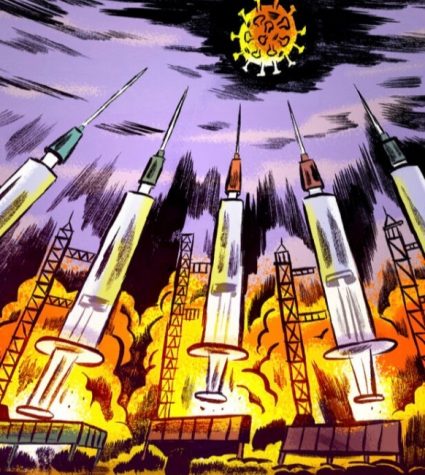The Race for a Vaccine
Ever since the COVID-19 pandemic reached the shores of the western world, if there’s one thing that we’ve excessively discussed and might I say even hoped for, is a vaccine.
Who’s making it? When will I get one? Is it even going to work?
These are questions that we’ve all asked ourselves but none of us seem to have substantive answers at this point in time.
We’ve seen news networks and media outlets go on and on about this which has resulted in what I like to call an unnecessary overcomplication of the issue at hand.
I’m going to try and simplify each one of those commonly asked questions in a way that all of us can understand going forward.
Okay first, who’s making them?
While there are hundreds of companies with approvals to develop a vaccine, only a handful of them have made significant breakthroughs in their research and the human trials which followed them. The most prominent of these companies include a trans – atlantic group consisting Pfizer (USA), Moderna (USA), BioNTech (Germany) & AstraZeneca (USA) in collaboration with the University of Oxford. Other companies who are said to be not that far behind include Johnson & Johnson (USA), Novavax (USA) & Sanofi (France). There’s also competition from Russia (Sputnik V), China and Thailand but for the large part, these companies are state owned and thus their claims haven’t been verified.
When can I expect to get one?
There’s a three step process to get a vaccine into the hands of the public. The first of these steps is successful human trials. All the companies I mentioned above have either gone through or are in the process of going through human trials. This includes multiple samples of paid volunteers who are injected with a dose of the potential vaccine and the effectiveness of this is then studied extensively. There are set parameters which these companies need to meet in order to be successful in their trials. For example, for one of the companies, more than 50% immunity may be considered successful while for another the number may be higher.
After the human trials, these vaccines are sent to the medical board of the country in question, which in this case is the Food & Drug Administration (FDA). These vaccine candidates will then be extensively tested by the FDA which depending on what they find, may or may not choose to approve it for production. In some cases, it could ask for more rounds of research or human trials.
For the purposes of this article, let’s assume that the FDA grants permission to one of these companies to mass produce them. Even if this happens, which by itself could take a while, it will be at least 4-6 months by the time every American has access to one of these. This is because the companies have to produce hundreds of millions of doses using production facilities which are already working overtime.
Will politics get in the way?
Like everything else, it probably will. There’s been immense pressure from the executive government to get the vaccine out before or around election day (11/3). This timeline, experts from the CDC and FDA say, is out of the question. The main reason for this is that the quality of a vaccine must be paramount before it is released. Millions of lives are at stake and with the current risk profile, a compromise in quality is just not an option.
On the positive side, there has been bipartisan support for a safe rollout and many elected officials from both sides have committed to leaving politics at the door when it comes to the vaccine.
Will they go through with this? I hope so. All we can do is keep our fingers crossed and hope for the best.
Who’s going to pay for them?
Fortunately, due to previously existing congressional legislation ( the CARES Act), most Americans with an adequate level of insurance coverage can expect to receive the vaccination at no additional cost to them. Keep in mind though, I said “no additional cost”, not free. Insurance companies are expected to increase premiums in the next 18-24 months to recover large amounts of capital that they may have to invest to get the vaccines out in the first place.
What about people with no insurance?
While there will definitely be an out-of-pocket cost for people with no medical insurance, pharmaceutical companies and insurance providers have committed to keeping costs as low as possible, keeping in mind how accessible this needs to be for everyone. While early estimates show that costs could be as high as $37 per dose, high volume ordering by states can bring this cost down to as low as $4.






